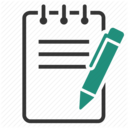
DOI: https://doi.org/10.15345/iojes.2017.02.017
REFERENCE: Karaca C., & Ocak M. A., Effects of flipped learning on university students’ academic achievement in algorithms and programming education, International Online Journal of Educational Sciences, 2017, 9 (2), 527 – 543. ISSN:1309-2707 (ERIC). https://doi.org/10.15345/iojes.2017.02.017
Özet
Bu çalışmanın amacı, alanyazında “flipped learning” olarak adlandırılan ters yüz öğrenmenin öğrenci başarısına olan etkisini araştırmaktır. Araştırma verileri, Aksaray Üniversitesi Makine Mühendisliği ve Bilgisayar Programcılığı bölümlerinde eğitim gören 220 kişilik bir örneklemdeki deney ve kontrol gruplarından elde edilmiştir. Veri toplama aracı olarak araştırmacı tarafından geliştirilen akademik başarı testi kullanılmıştır. Uygulamanın yapıldığı ders olarak ülkemizde ve tüm dünyada öğretiminde önemli zorluklar yaşanan Algoritma ve Programlama dersi seçilmiştir. Çalışma, yapılan bir pilot uygulamanın ardından 8 hafta boyunca yürütülmüştür. Veri analizinde, SPSS 24 programı yardımıyla, bağımlı değişken olan akademik başarının bağımsız değişken olan farklı öğretim yöntemlerine göre nasıl değiştiği t-testi kullanılarak incelenmiştir. Araştırma sonucunda, her iki bölüm içinde ortalama öğrenci puanları arasındaki farkın anlamlı olduğu görülmektedir. Ters yüz öğrenme iyi yapılandırıldığında yükseköğretim düzeyinde programlama öğretimi için akademik başarıyı artıran etkili bir yöntem olarak karşımıza çıkmaktadır.
Anahtar Kelimeler: Ters Yüz Öğrenme, Programlama Öğretimi, Akademik Başarı, Teknik Eğitim, Yükseköğretimde Kalite
Abstract
The purpose of this study is to investigate the effect of the "flipped learning" on university students’ academic achievement. In this regard, 220 students studying in Mechanical Engineering and Computer Programming in Aksaray University participated to the study. As data collection tool, an academic achievement test was developed by researchers. Validity and reliability issues for the test were established. Algorithms and Programming were selected as subject areas since university students experience significant learning difficulties. The study, after a pilot study, was carried out for 8 weeks. In data analysis, using SPSS 24 software program, it was analyzed how the dependent variable, academic success, changed according to different teaching methods by using t-test. As a result, it was seen that a significant difference was found between the average scores of students in each program. When the flipped learning for programming education at university level is constructed in a well-structured way, it emerges as an effective learning method for increasing academic success.
Keywords: Flipped learning, teaching programming, academic achievement, technical education, quality in higher education





